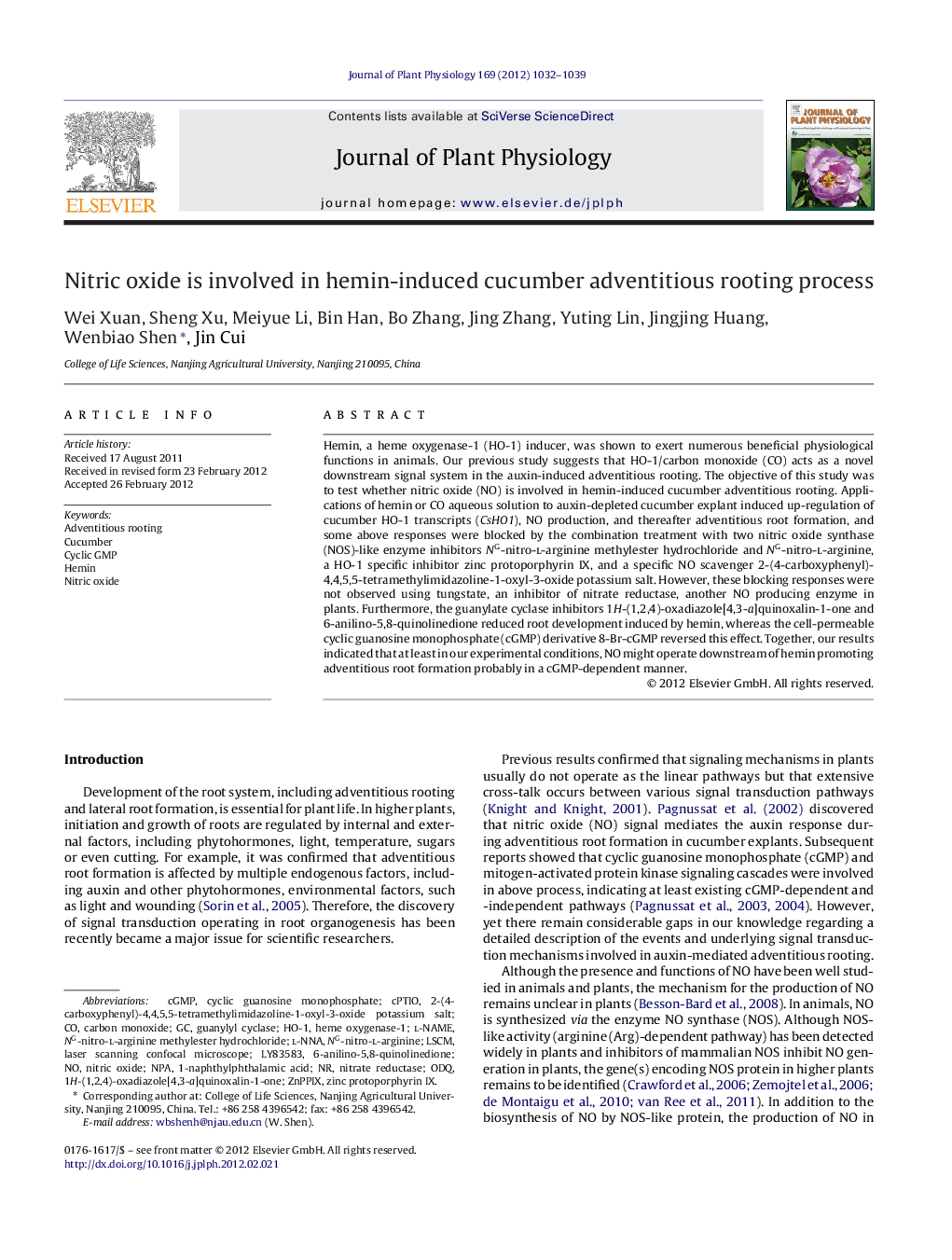| Article ID | Journal | Published Year | Pages | File Type |
|---|---|---|---|---|
| 2056234 | Journal of Plant Physiology | 2012 | 8 Pages |
Hemin, a heme oxygenase-1 (HO-1) inducer, was shown to exert numerous beneficial physiological functions in animals. Our previous study suggests that HO-1/carbon monoxide (CO) acts as a novel downstream signal system in the auxin-induced adventitious rooting. The objective of this study was to test whether nitric oxide (NO) is involved in hemin-induced cucumber adventitious rooting. Applications of hemin or CO aqueous solution to auxin-depleted cucumber explant induced up-regulation of cucumber HO-1 transcripts (CsHO1), NO production, and thereafter adventitious root formation, and some above responses were blocked by the combination treatment with two nitric oxide synthase (NOS)-like enzyme inhibitors NG-nitro-l-arginine methylester hydrochloride and NG-nitro-l-arginine, a HO-1 specific inhibitor zinc protoporphyrin IX, and a specific NO scavenger 2-(4-carboxyphenyl)-4,4,5,5-tetramethylimidazoline-1-oxyl-3-oxide potassium salt. However, these blocking responses were not observed using tungstate, an inhibitor of nitrate reductase, another NO producing enzyme in plants. Furthermore, the guanylate cyclase inhibitors 1H-(1,2,4)-oxadiazole[4,3-a]quinoxalin-1-one and 6-anilino-5,8-quinolinedione reduced root development induced by hemin, whereas the cell-permeable cyclic guanosine monophosphate (cGMP) derivative 8-Br-cGMP reversed this effect. Together, our results indicated that at least in our experimental conditions, NO might operate downstream of hemin promoting adventitious root formation probably in a cGMP-dependent manner.
